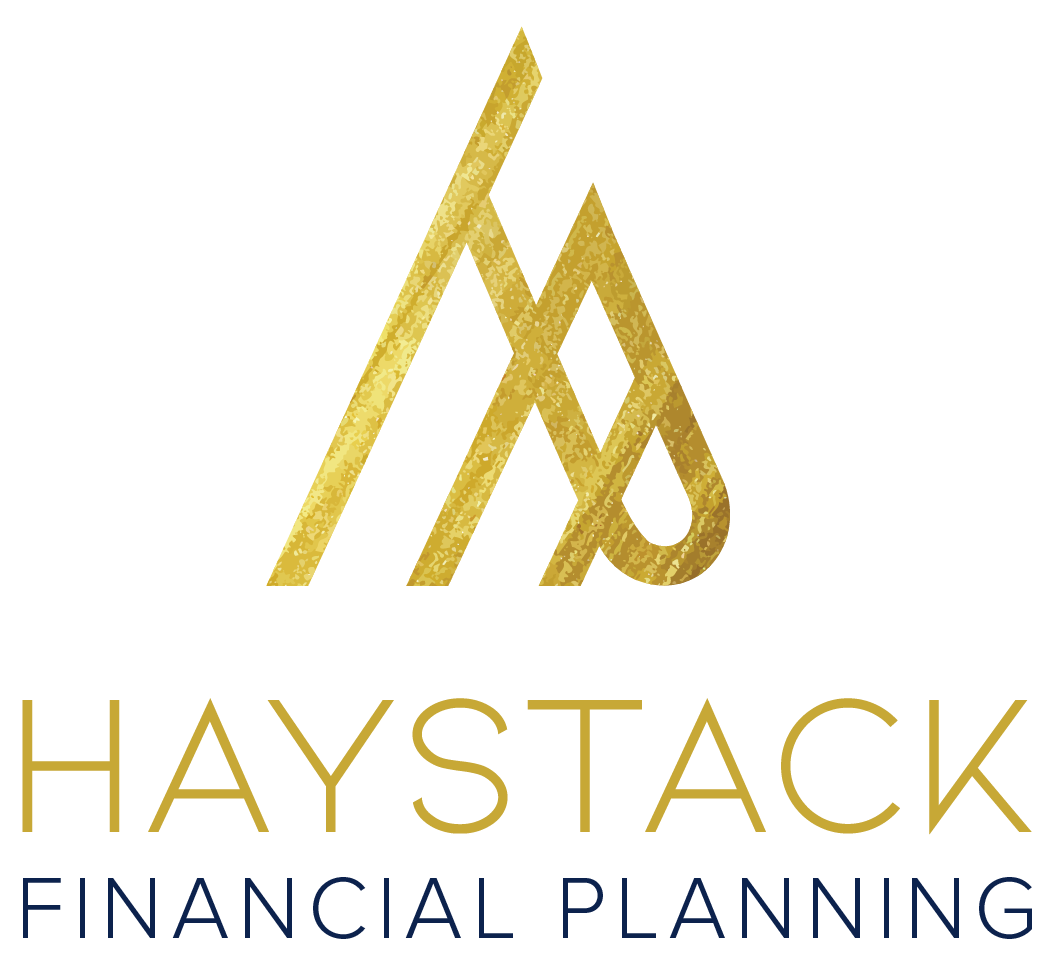PRACTICE PROFILE
Seeking work-life balance
Matthew Ricks of Haystack Financial Planning
By Kevin Adler

In 2021, Matthew Ricks decided that working as a financial planner, purchasing a house, and helping to manage the schedules of two young sons during the Covid-19 outbreak wasn’t complicated enough. He opened Haystack Financial Planning in November while the pandemic was still wreaking havoc across the U.S. and the world.
He left an Ameriprise franchise where he’d been an advisor for two years, moved from New York City to the Long Island suburb of Syosset, and started his fee-only firm. His sons were one and four years old at the time.
“Being a solopreneur and working exclusively from home has been a tougher transition than expected,” Ricks admits. “Balancing expectations for myself and the firm with being present for my two sons and wife while navigating a pandemic and moving to the suburbs has presented some challenges along the way.”
But he calls it “the perfect opportunity” to find a work-life balance while serving clients who are seeking their own forms of security.
“I turned 39 this September. I’ve talked to a lot of other planners and business owners [and I asked them] looking back, would you have rather grown the business and all-out grinding on it, or wait until your children are older and more independent and you have more free time to put in the business? A lot of them told me that, yes, I should have been there when they were younger and enjoyed it more.”
Slowing down
It wouldn’t seem like becoming a solo practitioner would represent a slower work pace, but for Ricks that’s apparently the situation. With an undergraduate degree from Penn State and an MBA from New York University’s Stern School of Business, Ricks quickly moved into the fast lane on Wall Street. He spent eight years in institutional asset management for JP Morgan, advising pension and endowment funds.
But he paid the price. “By 26, I was on high blood pressure meds,” Ricks says. “A friend said, ‘you are miserable and unhealthy.’”
It wasn’t just him, he realized. “Time after time, I saw how those who worked within finance did not have their own personal finances in order. I witnessed people crying after not getting as big of a bonus as they expected because they were overextended and living a lifestyle dependent on that money,” he says.
Becoming a financial advisor was a way off that treadmill. “I had a family friend who was in management at a large wirehouse, and he was in my ear about making the switch,” Ricks says. “I was also a few months from getting married and knew, at some point, either my wife or I would have to make a career change when we started a family. The timing was set up for me to be the one to make the change.”
In 2014, Ricks joined Wells Fargo as an advisor and stayed for four-and-a-half years before leaving for Ameriprise. While enjoying working directly with individuals and families on their investments at both organizations, going fee-only was the final piece of the puzzle. With the stability of his wife Stefanie’s job in the financial sector, the table was set for a new chapter in the family’s life.
Two years into this phase, Haystack has 22 clients and $8 million under management, and Ricks is content with where he stands now. He doesn’t have a target client profile at this point, though he’s developing a niche to serve people with disabilities and their families (see “Focus on disability” below).
Ricks says it’s too early to assess whether or when he might seek a major business expansion. And yet, being a detailed financial guy, he does have key performance indicators (KPIs) to measure his progress. “I have three to five KPIs, like revenue targets and expenses,” he says. When those targets are met, he might outsource some administrative tasks or hire a part-time assistant.
Although time with his sons isn’t a KPI, Ricks says it’s always part of the mix as well. For example, when he’s with them he puts his phone aside so that he won’t be tempted to check the news or respond to clients.
With that perspective, Ricks says he’s wary about getting caught up in growth for the sake of growth. “I have made a conscious effort lately to … really focus on my existing clients. How can I better serve them? What processes can I implement to assist with that? What other services or professionals do they need? I can have new client after new client, yet if I do not have a solid model for servicing them once they are on board, what does it matter?”
Support from NAPFA and the XY Planning Network have been critical to teaching Ricks how to provide exemplary service. He says he relies on educational programs provided by the groups, as well as their networks of peers, to learn how to manage client and prospect workflow and to meet the regulatory requirements of running a fiduciary practice.
“Through XY, I get my NAPFA membership and my technology stack. There’s been a lot of support for launching my business, such as ADV templates,” he says. “Having tech tools that have been vetted by financial advisors is especially valuable.”
Ricks adds that individual planners have been immensely helpful in showing him how to use some of the tech tools he has access to, and they have been generous about referrals. “I am incredibly lucky to have a great support system of other planners who are in similar positions where we hold each other accountable and give each other a push when needed,” he says.
Every dollar has a purpose
The firm’s name, Haystack Financial Planning, references the Ricks family’s Dutch background. A “rick” is a haystack in Dutch, and it also means to accumulate or gather. That’s what sound financial living is all about, and it’s what Ricks preaches to his clients.
“When I work with clients, I abide by the idea of every dollar having a purpose within their plan,” he says. “That typically means we’ll have a few different account objectives and allocations depending on the goals and timeframes, using ETFs, mutual funds, and sometimes individual stocks.”
A younger client might be saving for a new house in five years or less, or a client with a home might be saving to build a wheelchair ramp for a parent who will be moving with them. “The money for the house goes into a CD or high-yield saving account or ultra-short term bond fund. We’re protecting the principal,” he says.
Caution has been rewarded in 2022, with the stock market’s 20% downturn and even steeper losses for some formerly high-flying sectors. Ricks says that numerous clients have told him, “we can sleep at night,” because he has helped them manage for the market’s ups and downs.
“Yes, the printed or online statement is not fun to look at,” Ricks tells them, “But let’s take a look at it in the scope of your plan.”
One thing that Ricks says he learned in early 2020 when stocks took their first big Covid dip is that each client is an individual. For some people, hearing the details about the market just added to their stress. “I learned that saying less was better,” Ricks says. But for the clients who know their daily retirement balance, a heavier dose of contact was appreciated.
Sometimes, Ricks adds, helping people is not about investments at all. Early in a relationship, Ricks works with clients to improve their savings habits, such as maxing out their 401(k) plan. For a business owner eligible to use a SEP IRA, his conversation might include what that entrepreneur is doing to get three more new clients so that the SEP IRA can be fully funded, Ricks says. “Then we can talk about investments,” he says.
Focus on disabilityMatthew Ricks, founder of Haystack Financial Planning, is developing a specialty in individuals with disabilities and their family members. Unlike advisors with direct, personal experience with disability, Ricks became interested in the topic through pro bono work sponsored by the Financial Planning Association. In brief sessions to help people stabilize their finances, Ricks said that the same issues came up often: serious accidents, workers’ compensation questions, and short- or long-term disability needs. In researching for solutions, he concluded that the needs far exceed the available services. “The more I Googled and saw the size of community, I realized there are not enough advisors,” Ricks says. “I was about six years into my career in planning and was managing a different book of business, but this was way to differentiate myself. Also, being a planning nerd, I loved the extra layers of some of these programs.” While Haystack Financial Planning takes all types of clients, its website’s home page states that it specializes in financial planning for the disabled community. Typically, the services include checking on access to supplemental Social Security income (a topic addressed in “Social Security helps disability beneficiaries to work” in the Nov. 2020 NAPFA Advisor). Because some federal benefits have income or asset caps, Social Security payments can be voided if a person has a trust or financial support from parents, Ricks explains. “If grandma and grandpa set up a trust, it could screw something up,” he says. “Maybe we can move that trust to another trust. That’s where the ABLE account has been so helpful; it’s quick and inexpensive to set up, and the first $100,000 does not affect SSI [supplemental security income].” As word gets around about his expertise, Ricks believes he could become one of the go-to advisors for the disabled community. However, because he lacks first-person caretaker experience Ricks admits this could make some potential clients wonder if he truly understands their needs. But by being humble and always eager to learn more, Ricks believes he can contribute to the well-being of people in need. “I have a lot to learn,” he tells clients. “Sometimes I just ask, ‘How can I take stuff off your plate?’” |
Haystack Financial Planning, at a glance
Location: Syosset, N.Y.
Website: Haystackfp.com
Year founded: 2020
Number of staff: 0
Number of clients: 22
Amount of money managed: $8 million
Description of typical clients: Ages range from 30s to retirement
Typical client needs: Long-term financial goals; some have a family member with a disability.
Favorite financial planning website: kitces.com, XY Planning Network forum (membership required), and Twitter (for financial services news)
Favorite nonfinancial planning website: Golf-related sites, including TheFriedEgg.com and GolfersJournal.com
Piece of advice to fellow NAPFA members: “We have all heard it before, and it cannot be said enough. We need to stop thinking of each other as competitors. Financial planning has enough hurdles without us talking poorly or looking down on others. Let’s collaborate. ... There are plenty of people who need our help … and for us to have a successful business and not negatively talk about financial planning or our peers.”
